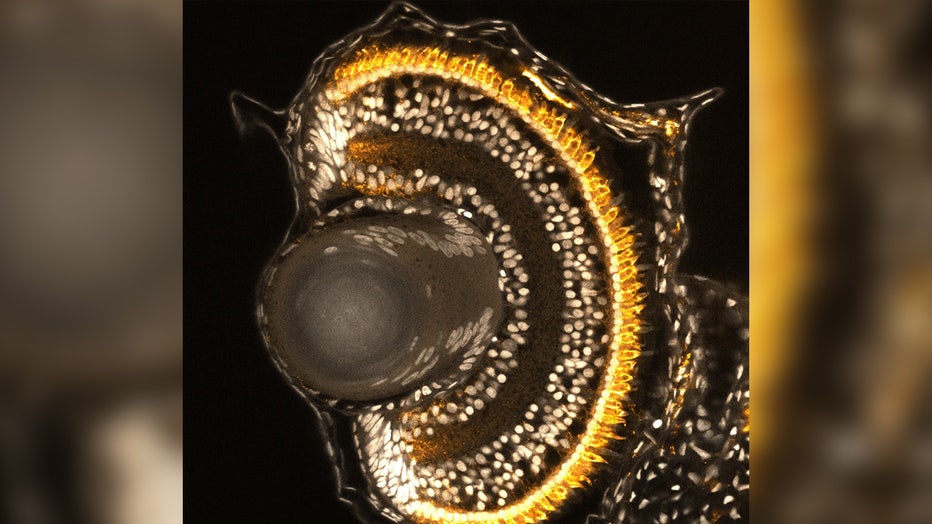Biologists invent new microscope inspired by scallops’ eyes to more effectively study organs

A mirror-based microscope can produce crisp, clear images, such as these neurons (Credit: Thomas Naert, Anna-Maria Reuss, and Fabian Voigt, University of Zurich)
ZURICH, Switzerland - Researchers in Switzerland have created a new kind of microscope that can be used to image samples found in any type of liquid – especially the insides of organs that have been rendered transparent. The design allows for high magnification while still retaining enough light.
Lead researcher and molecular biologist, Fabian Voigt, told FOX Television Stations that he was studying the eyes of scallops, which contain curved mirrors to allow the sea creature to see.
He noted that the eye of a scallop is very similar to a type of telescope used by astronomers to map the night sky. His team realized that by shrinking the telescope to fit in the palm of a hand and by filling it with a liquid, it could be adapted to act as a microscope.
"While struggling to improve the design of my microscopes, I realized that a tiny telescope filled with a liquid much like a scallop eye could possibly work," Voigt explained. "Our work demonstrates an engineering shortcut – it shows that something that was considered to require quite complicated optical systems can be done with a much simpler approach."

Imaging of individual developing photoreceptors in the eye. (Credit: Thomas Naert, Anna-Maria Reuss, and Fabian Voigt, University of Zurich)
Voigt said the design, reported in Nature Biotechnology last month, is just the foundation to further research.
He said this could be useful for researchers who study organs to do so in a far cheaper and less restrictive way.
"It's now time to take the idea and run with it," Voigt continued.
RELATED: These smart leggings tell you when you’ve exercised too much
The researchers hope that scientists could use this concept to build instruments that can image larger tissue samples faster and better. They also hope this will allow scientists to make microscopes far cheaper to diagnose tropical diseases in low-resource settings.
"This opens up an exciting space to try out all kinds of new ways to build microscope objectives which, hopefully, can be used by biologists to unravel the secrets of the brain in much more efficient ways," Voigt shared.
This story was reported from Los Angeles.

